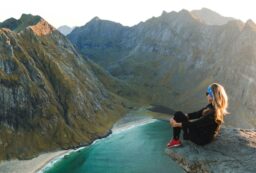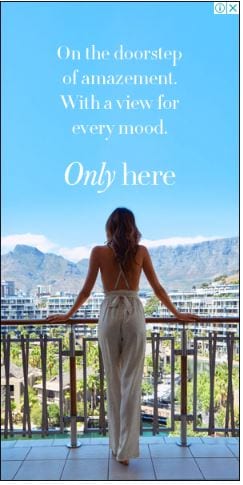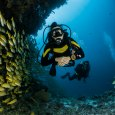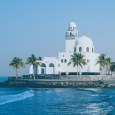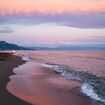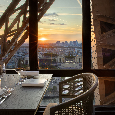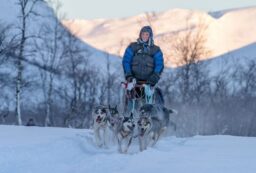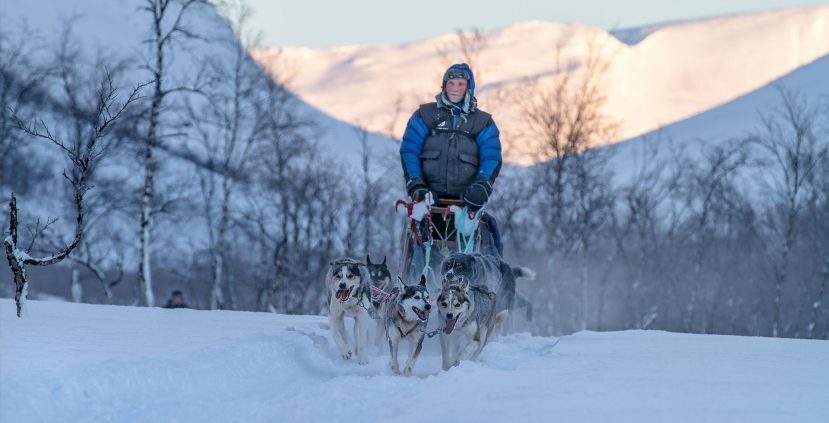
By Susan Kime
For too many Western poets, the idea of winter relates to hibernation, quiet, and loneliness. It is the stillness, the cold, the Shakespearian “old December bareness” combined with that winter slant of light that, as Emily Dickinson wrote, “oppresses/ like the weight/ of cathedral tunes” that has given winter such a bad poetic rap.

But for those who do not feel the heft of cold, winter becomes a time when every cell enlivens as the cold awakens thoughts and feelings drowsed during the previous summer and fall. And further, if traveling farther, the Northern Lights, the great winter dessert, can be observed, turning a star-spangled sky into rippling waves of greenish/bluish silk, along with comet-like rays of shooting electricity. If we are fortunate, in winter we can see the Sky Electric in its dazzling, far north tatters.

With this winter-affective mindset, we landed in Kirkenes, Norway, 215 miles north of the Arctic Circle in February. We wanted to experience the prismatic essence of the legendary Norwegian winter, understand better those who lived in the north of the Arctic Circle, and learn more of the culture of those who chose this wintered life, all in hopes of seeing the Northern Lights, the Sky Electric.

Kirkenes was the first stop, as we sailed south from there. Kirkenes was as far north as we went on this trip, but it was enough: we were three miles from the Russian border, with street and highway signs both in Russian and in Norwegian. We drove along the snowy flatlands, with a few hills here and there, away from the small town of 3400 (it is said there are more reindeer here than people) to the Kirkenes SnowHotel, one of the few ice hotels in the world.
The SnowHotel is built of snow, ice and salt. It melts in the spring and is rebuilt when it freezes again. Its daily activities that include a Snow Crab Safari and dog sledding. The guests can also snowmobile into the Arctic night, looking for the Northern Lights.
"The Northern Lights, the great winter dessert, can be observed, turning a star-spangled sky into rippling waves of greenish/bluish silk, along with comet-like rays of shooting electricity."
First, the Snow Crab Safari
After donning our winter weather gear, we rode on sleighs, deep into the frozen fjord landscape, bitter winds whistling around our helmets. As it was about 3:30PM, the fjords, the snow, and the sky all reflected various shades of early evening — a landscape of steel gray. One would think nothing could survive here, but we looked more closely: the vast blue fjord was teeming with life right below the surface. We left our sleigh, and watched the men from the Snow Hotel open a gash in the ice, put their nets down for just a few minutes. And what emerged were more Snow Crabs than could be counted.

Not long after our ride back from the Fjord, we went to a warm cabin, lit by candles and an open fireplace, where we were offered heaps of boiled crab legs and claws. The taste was exceptional: fresh, of the Fjord, but not fishy, the meat was sweet and firm. It was an experience both primitive and cordial, and in a sense recyclable also: we ate what we caught. As we sat around the wood plank table, our varied lives, deadlines, families, livelihoods seemed distant now: we lived in this winter moment, far from our madding identities together with one goal: cutting the crab carapaces, digging to find the meat beneath. For those moments, we became our ancestors, and were content.
Second: Exploring the SnowHotel
 Unlike what most would expect, the SnowHotel does not require a night committed to shivers under a cover. In fact it is the polar opposiste, warm and cozy where guests are assured a good night’s rest. Each room is different, with different ice sculptures on the walls and some on the ceiling.
Unlike what most would expect, the SnowHotel does not require a night committed to shivers under a cover. In fact it is the polar opposiste, warm and cozy where guests are assured a good night’s rest. Each room is different, with different ice sculptures on the walls and some on the ceiling.

The room area corridors flow into a larger sitting area where you can eat or talk at ice tables, with ice sculptures always nearby. Outside is a separate structure that housed Gabba, their restaurant: warm, with an open fire to cook food, eat warm bread, drink vegetable broth and roast reindeer sausage.
Third: Dog Sledding
We did go dog sledding, and it was there I realized how deeply connected I was to the winter landscape. As the wind blew, it felt like about 10 below zero, I realized how much I loved the colors of winter – hundreds of shades of silver, white, light blue, refracting the Dove gray sky, all moved quickly, too quickly, as the sled dogs ran. No howling or yelping, just panting and tearing up the soft snow, much of it striking us. As with all aspects of the winter outdoors, the flying snow kept us awake and aware, grateful to be part of such a Fjordscape.
Arctic Cruising on the Hurtigruten Midnatsol
But this primordial winter experience was not over; it had just taken a different mode of Norwegian transport. The Hurtigruten Midnatsol, our ship, had docked, and waited for us to embark. It would take us from Kirkenes, crossing the Arctic Circle, south to Bergen.
"Streaks of green melted into waves, green, blue, and a kind of chartreuse also. It lasted around five minutes, only to return again a few hours later."
Going South

We boarded the ship in Kirkenes, and disembarked at their many, but not all, of the ports of call. Still above the Arctic Circle, the many towns and cities all had fascinating histories – just a few examples: Hammerfest, the most northerly city in the world, a UNESCO Heritage site because it was the first city in the world, in 1891 no less, to have electricity created by water power, and has the Meridian Monument, one that is dedicated to the first exact measurement of the earth; Tromso with its Arctic Cathedral, where we heard a midnight concert combining ancient Norwegian and Sami folk songs with Grieg and Mendelssohn classical selections. Then there was Trondheim, the location of the Nidaros Cathedral, begun in the 1000’s, and where the bones of St. Olaf, the Patron Saint of Norway, are said to be buried.

Then, we traveled through the Lofoten archipelago at dusk. At 68N, the Lofoten archipelago is above the Arctic circle, and at the same latitude as Greenland or the northern parts of Alaska. In the summer, it is one of the most picturesque of areas, but in winter, and at gloaming or dusk or what is called The Blue Hour, the Lofotens are dazzling. All the blues and purples on the spectrum reflect the frozen waterfalls, the towering mountains in the still water, so the observer does not know where reality and the reflection begin and end. The Lofotens are approximately 100 miles north of the Arctic Circle.

Our Midnatsol ship crossed the Arctic Circle at 66 degrees 33 minutes, and 44 seconds north latitude. It is the southernmost latitude in the Northern Hemisphere at which the sun can remain continuously above the horizon for 24 hours. The only way an observer can determine this crossing is by seeing a large globe placed on Vikingen Island. We passed this sole sentinel in the morning: yet the sky was an overcast gunmetal blue. Nonetheless, there was celebration on the Midnatsol that celebrated this crossing.

On last evening on the Midnatsol, the clouds cleared, and we did see the Northern Lights. Streaks of green melted into waves, green, blue, and a kind of chartreuse also. It lasted around five minutes, only to return again a few hours later. It was a compelling finale to a reconnaissance, a re-knowing, of the Northern sky, as most of the time on our journey, the sky had been overcast, moving from a deep grey to a storm-filled blue.

But now, the lights reminded me, as they leaped and danced, jarring the sky into unexpected bright life, of the gifts of winter. As with many things, we are blessed with celestial rewards, if we are fortunate enough to be in the right place and patient enough to wait.





